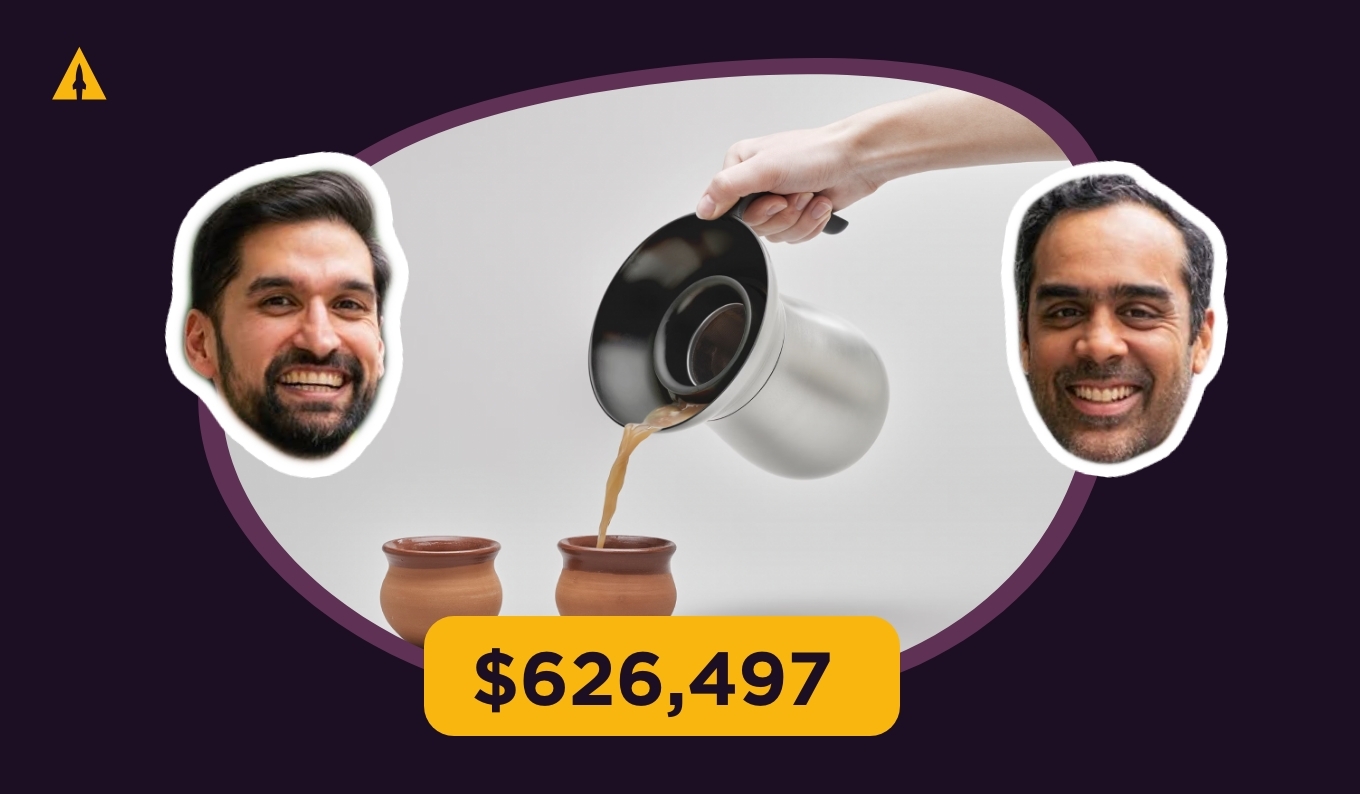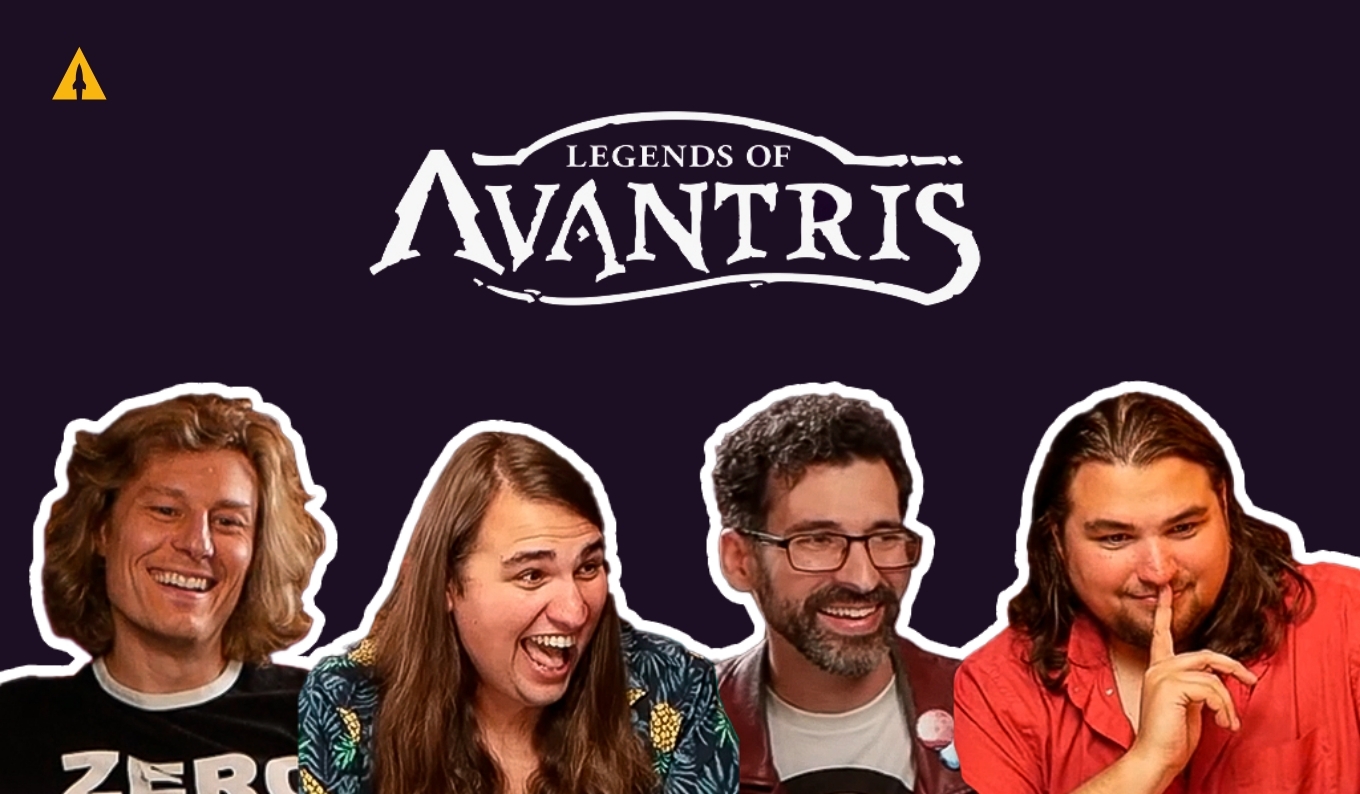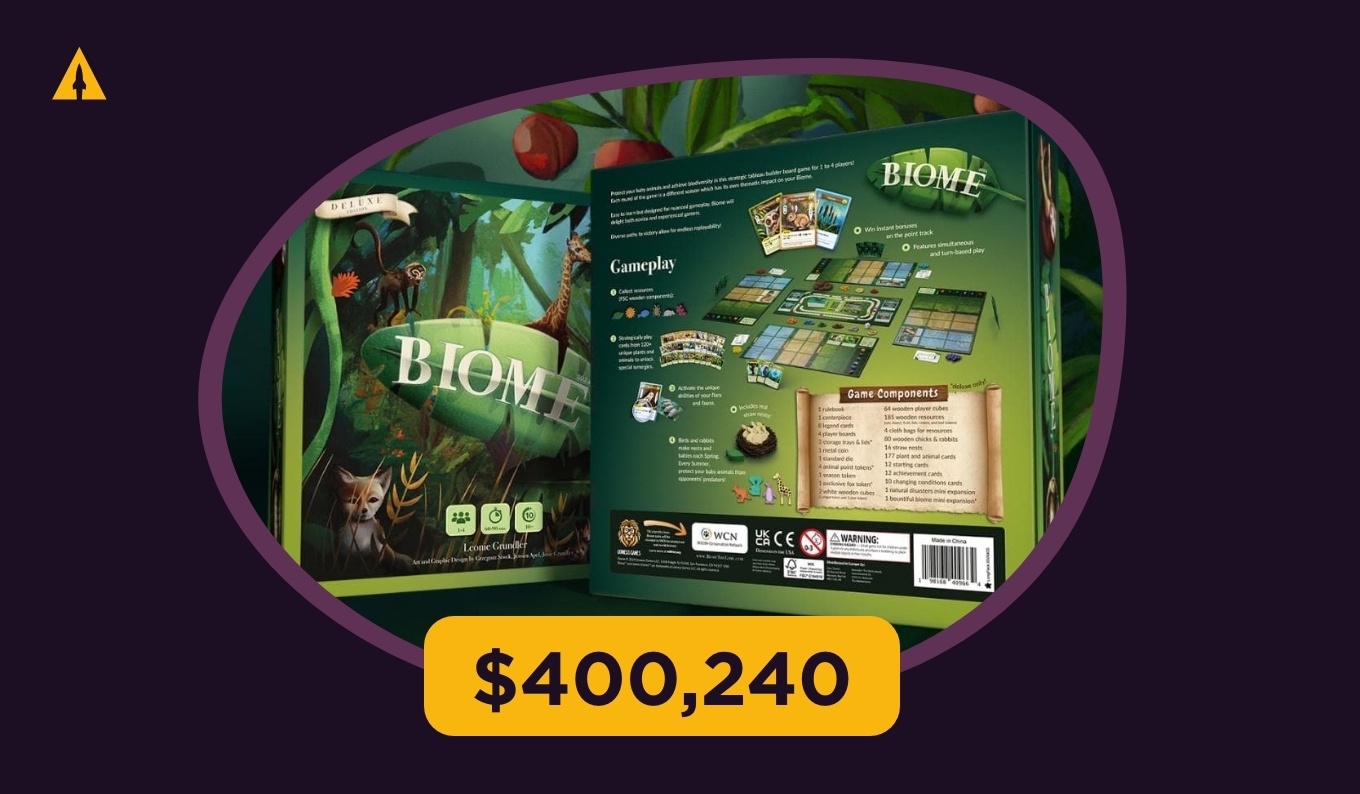
These two friends turned their chai obsession into a $626,497 Kickstarter success.
Meet Anish Shonpal and Nikhil Shah – the founders of the Loka Chai Maker.
But what really caught my attention about their story wasn’t just the numbers. It was how they navigated the manufacturing challenges, testing, and marketing decisions that many of you are facing right now. And in this article, I’m going to share their best tips with you.
As a heads up, this article is basically a summary of their episode on our Masters of Crowdfunding podcast. So if you want to check out the full episode out, you can find it below:
Contents
The Product: Solving a Real Problem
The Loka Chai Maker was born from a simple frustration.
Making authentic chai at home is messy and time-consuming. As Anish explained, traditional chai-making involves dealing with boil-overs, grinding ingredients from scratch, and cleaning up multiple pots and pans afterward.
Their solution? An innovative product that makes chai “quicker, cleaner, and easier than ever before.” The device features what they call an “infinity chai fountain” – a visually striking brewing method that captures the chai as it boils over, solving the key pain point while creating a memorable product experience.
Their target audience spans two groups: those who already make chai at home but find it too laborious, and those who enjoy chai in cafes but have never attempted to make it themselves. This clarity about their audience helped shape both their product design and marketing strategy.
The Manufacturing Journey: Persistence Pays Off
Finding a manufacturing partner proved to be one of their biggest challenges.
After creating over 100 prototypes, the founders faced the daunting task of finding a manufacturer willing to produce a completely new product with custom tooling.

“If we knew what we know now, we would have never started the project,” one of the founders admitted. But that initial naivety gave them the optimism to push through the tough times.
Anish shared how he traveled to a trade fair in Frankfurt, Germany, carrying an early prototype to pitch potential suppliers. Despite initial enthusiasm from many manufacturers, they began dropping out one by one as conversations progressed. The founders believe this was due to the novelty of their product – most manufacturers prefer the safety of producing established designs.
The breakthrough came when a supplier who had rejected them connected them with a manufacturing partner in China. This connection, combined with hiring a local agent on the ground to conduct due diligence, ultimately led to finding the right manufacturing partner.
Key Lessons in Manufacturer Relationships
I’ve seen this countless times with creators. Finding the right manufacturer is often the biggest hurdle in bringing a product to life. Here are the critical insights Nikil and Anish shared:
- Know your market: Be able to demonstrate the rationale behind your product with working prototypes, not just ideas.
- Show conviction and belief: Your passion and confidence in your product are contagious and necessary to convince manufacturing partners.
- Present professionally: Send polished materials, including detailed engineering drawings and product briefs. This shows that you’ve done your homework.
- Remember you’re being interviewed too: Good manufacturers have choices about which products to work on. You need to sell them on why your product is worth their investment of time and resources.
- Have people on the ground: Local agents who can visit factories and validate capabilities are invaluable.
The Crowdfunding Strategy: Finding What Works
The team partnered my team for their crowdfunding campaign, and followed our structured approach that began with the pre-launch:
Pre-Launch Phase Success

They built an email list of 22,000 potential backers and secured roughly 4,000 VIP reservations (people who placed a $1 deposit). This pre-launch audience converted into $169,122 in pre-sale revenue when they launched.
Through extensive creative testing in the pre-launch phase, they learned that their marketing should focus on two key elements:
- The problem (showing chai boiling over in a traditional pot)
- The solution (the “infinity chai fountain” effect)
Here’s what’s fascinating. Professionally shot studio images underperformed compared to simple phone-captured videos showing the problem and solution. “I was quite skeptical,” Anish admitted. “I thought, why would you use that over these beautiful studio shots? But she [Hera – one of our team members] was absolutely right.”
Scaling Ad Spend Strategically
Initially hesitant about advertising spend, they began with daily budgets around $75.
As they gathered data showing strong conversion rates, they gradually increased spending, eventually reaching $900 a day. That’s a 12x increase from where they started.
“By the end of it, we’re spending like $900 a day absolutely fine with it, not sweating at all,” Nikil shared. Their calculations showed that with a $10 cost per email acquisition, where one in three might convert to a $115 product, they were seeing a 3X return on ad spend.
They ultimately spent around $60,000 on paid media (from their total marketing budget of $75,000 including commissions and content creation), yielding a return on ad spend of approximately 8X.
Other Effective Channels
Beyond paid ads, they found success with:
- Influencer partnerships: Their collaboration with UK-based influencer London Kali proved transformative. One reel they created together reached 6.8 million views, generating enormous engagement and questions about how to order.
- Newsletters: Despite initial skepticism about third-party promotional services, they found that newsletter placements provided valuable exposure to new audiences.
- Google Search Ads: They regretted not starting Google campaigns earlier, noting that once their product gained awareness, people began actively searching for it.
Building Brand vs. Product Focus
Now, this is a point where they diverged from standard advice.
While following much of the LaunchBoom playbook, they made a deliberate choice to push back on the common advice to focus solely on product and ignore brand building. Instead, they integrated their brand values, aesthetics and story into the page design.
“We don’t want to make it neutral because that’s not who we are,” Nikil explained. “We want to create a brand here and an experience that really represents what we stand for, which is creating a product that’s rooted in tradition and reimagined for today.”
This approach resonated with backers, who frequently commented on both the product’s functionality and the brand’s authentic story.
Community Building: The Power of Personal Connection

The founders personally responded to thousands of comments, emails, and DMs throughout their campaign.
This investment of time yielded invaluable insights about customer needs and enabled them to build a core group of passionate brand advocates.
“We made a real conscious effort to try and delight people with our customer service,” Nikil shared. “Just being really human, having a bit of a laugh with people, but just kind of over-communicating.”
Mistakes and Lessons Learned
For all their success, the founders were candid about their missteps:
- Excessive skepticism: They initially dismissed many promotional services as “ripoffs,” only to discover later that some offered genuine value. This delayed their implementation of helpful channels like newsletters and affiliate programs.
- Time constraints: Despite giving themselves what felt like ample time, they wished they had allocated even more runway for testing different marketing approaches.
- Delegating too early: They emphasized Paul Graham’s advice about not delegating customer interactions too early. By handling customer communications themselves, they gained crucial insights that will inform future product development.
I see this pattern with many creators. When you’re launching a product, there’s a natural tendency to be skeptical of services asking for your money. But sometimes that skepticism can work against you. It’s about finding the right balance between careful evaluation and being open to tools that genuinely drive results.
The Vision for Loka
Looking ahead, the founders envision Loka as more than just the chai maker.
They see themselves building a South Asian design store with products “rooted in tradition but reimagined for today.”
Their approach draws inspiration from other successful product creators who focus on solving kitchen problems with high-quality, premium products. The overwhelmingly positive response to their first product has only strengthened their conviction that there’s a market for thoughtfully designed products that honor South Asian cultural heritage while embracing contemporary design sensibilities.
Final Advice for Product Creators
Let me share the founders’ closing advice, which resonates strongly with what I tell creators:
- Just start: “The first step is always the hardest. If you have an idea, if you have a vision or something that you think could work, please don’t be afraid to just try.”
- Balance entrepreneurship with creativity: Nikil suggested approaching product creation with an artist’s mindset: “Artists want to create beautiful things and bring things into the world… Our objective at the start was honestly just to create a beautiful product that’s used by a few thousand people.”
- Take care of yourself: Building a product is a marathon, not a sprint. Making time for physical and mental well-being is crucial for sustained success.
And that’s what I find most inspiring about their story. They started with a simple goal – creating a beautiful product that would make life better for a few thousand chai lovers. They ended up with a $600K+ campaign and a clear path to building a meaningful brand.
If you’re interested in launching a brand like Loka, we’re here to help. You can chat with my team by clicking here. Looking forward to hearing about your product.






